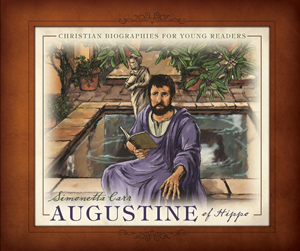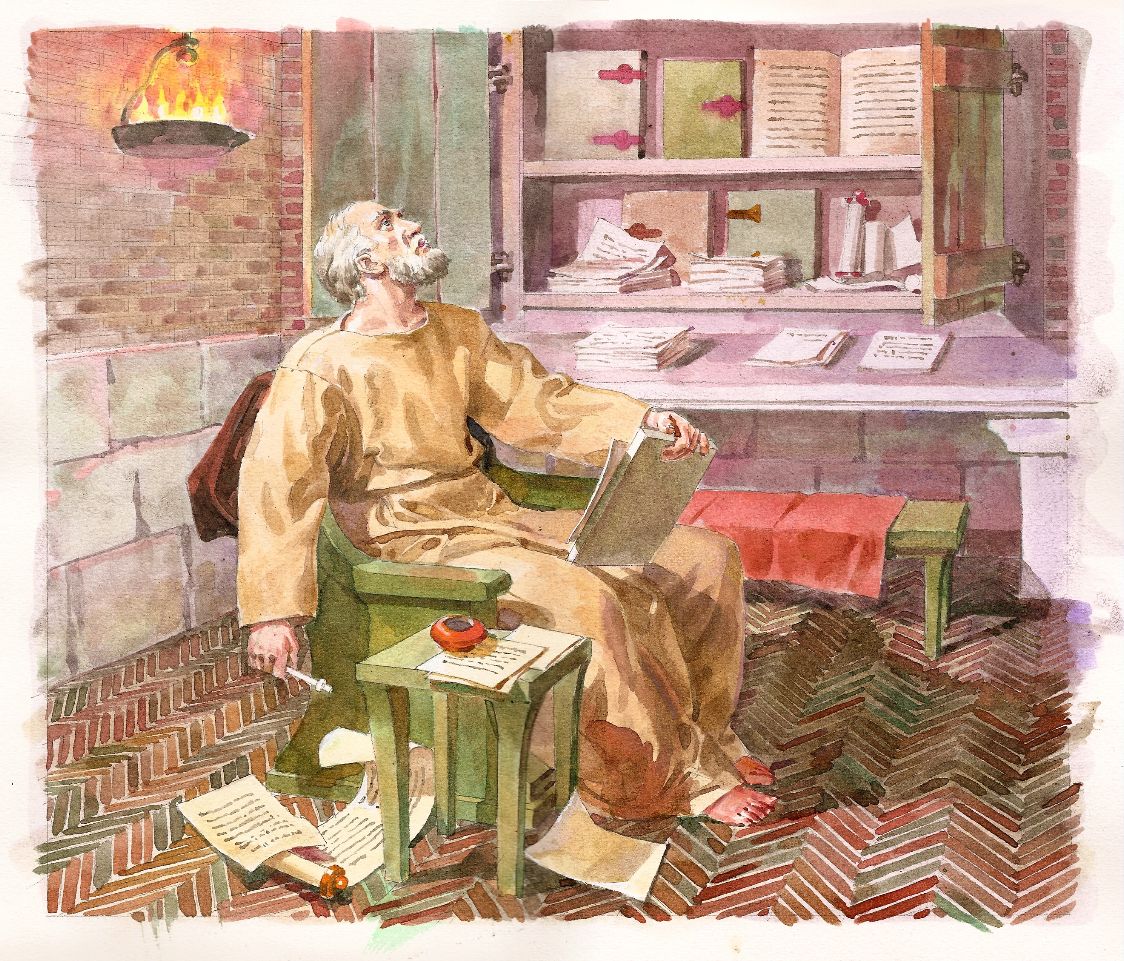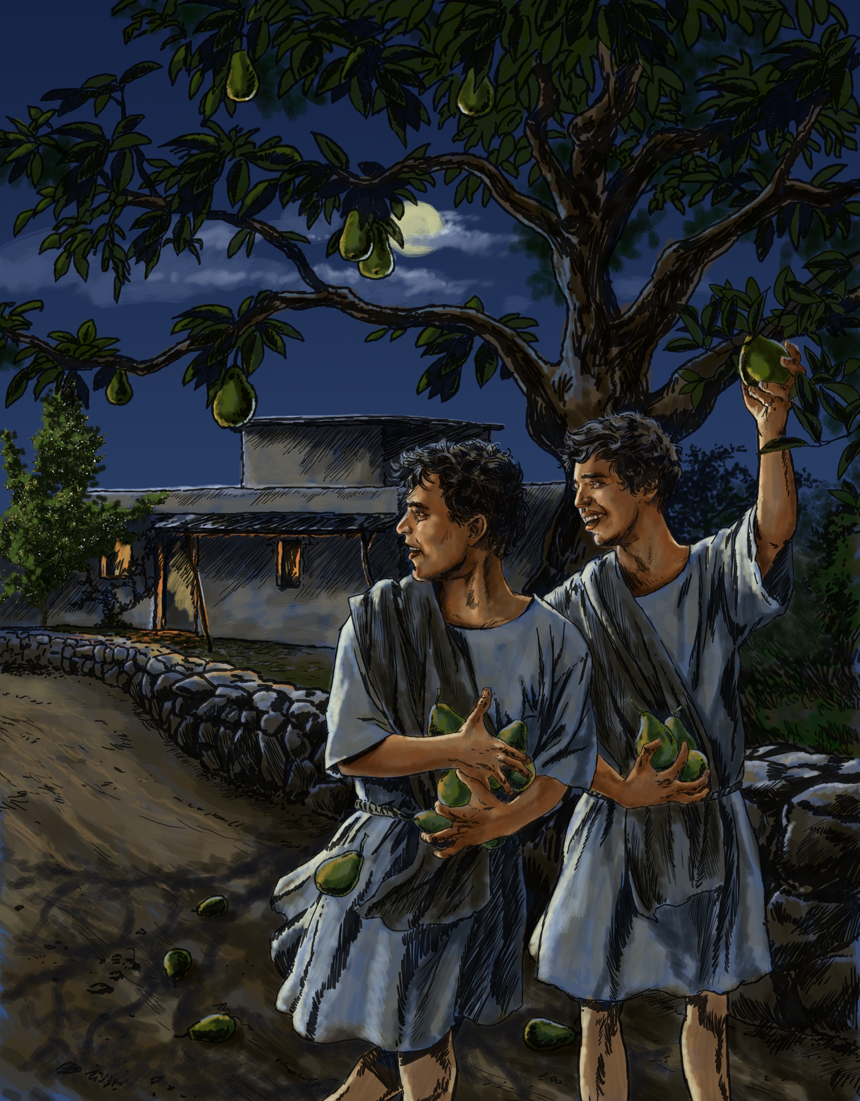 Outside of the people in the Bible, Augustine of Hippo is the most influential person in church history. Yet how many people know his story? In this book, Simonetta Carr introduces young readers to the life and ministry of Augustine. Readers will come to know Augustine’s personal struggles and the high value he came to place on the Bible and truth. Readers will also see the difficult days in which Augustine lived, learning about his disputes with false teachers and the turbulent times during the fall of the Roman Empire. This volume is vividly illustrated, simply written, and full of interesting facts. It is written for young readers, but is sure to capture the interests of the whole family. Read a preview of the book.
Outside of the people in the Bible, Augustine of Hippo is the most influential person in church history. Yet how many people know his story? In this book, Simonetta Carr introduces young readers to the life and ministry of Augustine. Readers will come to know Augustine’s personal struggles and the high value he came to place on the Bible and truth. Readers will also see the difficult days in which Augustine lived, learning about his disputes with false teachers and the turbulent times during the fall of the Roman Empire. This volume is vividly illustrated, simply written, and full of interesting facts. It is written for young readers, but is sure to capture the interests of the whole family. Read a preview of the book.
Purchase
North America * Italy * Indonesia
Video
Endorsements
“Simonetta Carr offers a sympathetic, whirlwind tour of the life, times, and beliefs of Augustine of Hippo, one of the most important and long-loved figures for Western Christianity. Maps, illustrations,timelines, and photos engage the imagination at a pace that will hold the interest of young readers.” Brandon and Mindy Withrow, authors of the popular church history series for children, History Lives
“A splendid way to introduce children-and adults too-to one of the most influential Christians who ever lived.” Phillip S. Cary, Scholar in Residence at the Templeton Honors College at Eastern University, and author of several books on Augustine
“Few figures in Western history are as important as Augustine. He is one of the early church fathers to whom the Reformers rightly looked as an inspiration for their theology and piety in many respects but he is more than that. He is an old and dear friend. Simonetta Carr has produced a clear, readable introduction to the life and work of this great Christian and our old friend.” R. Scott Clark, Professor of Church History and Historical Theology at Westminster Seminary California
“I just got the book. I started reading it, and I think it’s really well done. Not only is it informative, but it’s well designed. Thanks, and keep up the good work!” – Mike Venezia, best-selling children’s author
“In this book, Simonetta Carr introduces young readers to Augustine’s life and spiritual ministry. Readers will learn about the personal conflicts Augustine faced as he discovered the high value of the Bible and the truth. They will also experience the difficult days Augustine lived, learning much from his disputes with false teachers, as well as the turbulent times of the fall of the Roman Empire. This volume is accurately illustrated and simply written to attract the reader’s attention to the interesting facts of St. Augustine’s life. Written for ages 7-12, it can capture the interest of the whole family.” (Associazione Storico Culturale Sant’Agostino, Italy – translated from Italian).
Frequently Asked Questions
Please use the contact page to submit your questions.
Question: Wasn’t Augustine a libertine before his conversion? Why didn’t you talk about it in this book?
Answer: In what is presently considered Augustine’s definitive biography, Peter Brown writes. “Far from being the libertine some authors have imagined, converted at the age of 32 from a life of unbridled sensuality, Augustine was in reality a young man who had cut the ebullience of his adolescence dangerously short.” (p.27) According to Brown, Augustine had a short adolescent crisis which lasted about one year, when he loved the theatre and longed for love, but, Brown continues, “In the next two years he clamped down firmly on his ebullient feelings.” (ibid.) He later had a concubine, but in those days that was simply a second-rate marriage, and he was faithful to her for many years. I didn’t talk about this type of “marriage” because it would have required a very long explanation. Looking back, I could have added it to the “Did You Know?” section.
Errata Corrige
If you have the first edition of this book, please remember that, on page 7, the location of the capital of the Roman empire is incorrect – it was Milan, not Rome. This was corrected in the second edition.



